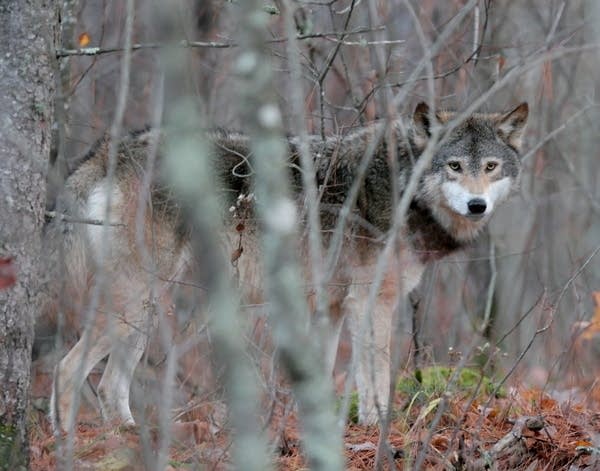Wolf hunt races to quick close in NE Minnesota

Updated at 3:26 p.m. | Posted at 5:57 a.m.
Wolf hunting in northeastern Minnesota closes Friday, just seven days into the hunt.
That puts this year's late season hunt on track to have the earliest closing date of any wolf season.
This is the third year the state has held a legal wolf hunt. The state is split into three hunting zones and early and late seasons open Nov. 8 and Nov. 29.
Create a More Connected Minnesota
MPR News is your trusted resource for the news you need. With your support, MPR News brings accessible, courageous journalism and authentic conversation to everyone - free of paywalls and barriers. Your gift makes a difference.
As hunters reach state Department of Natural Resource harvest goals, the seasons are closed. This year, early seasons in all three zones closed early.
"This is the fastest we've ever filled our harvest goals," DNR large carnivore specialist Dan Stark said.
As of Thursday night, hunters harvested 35 wolves in northeast Minnesota — hitting the DNR target harvest for that area in just six days. It took 18 days to reach last year's target.
Wolf hunters killed more animals on each day of the season this year. The 2014 average is 10 wolves killed each day of the hunt, Stark said.
In the previous two years, five or six wolves were killed each day of the season. On Thursday, hunters shot or trapped 21 wolves statewide, breaking last year's record of 14 animals in a single day.
Hunting will continue in northwestern and east central zones until Jan. 31 or until harvest goals are met.
Stark isn't sure why hunters are shooting and trapping wolves more quickly this year. He said tracking snow can help. Temperature and food source changes could play a role, but Stark expects hunters are just getting better at capturing their quarry.
"It may not be the same hunters and trappers that have hunted each year," he said, "but they likely know somebody that has. People are finding ways, and gaining knowledge that is increasing their success."
DNR researchers have yet to crunch harvest demographics numbers for this year's hunt. Here's what they found from previous hunts:
• Fewer than 5 percent of wolf hunters kill a wolf. In part, this is because a pack of five wolves roams between 20 and 100 square miles. A hunter can only cover so much area, so the odds of even seeing a wolf are low. By comparison, deer and bear hunters generally have a roughly 30 percent success rate.
• Traps are much more effective than firearms. The early season is firearms only, but during the late season, when traps are allowed, more than 80 percent of the wolves killed are taken in traps.
• The wolves killed so far in Minnesota are evenly split between male and female. While female deer are generally more gullible and easier to hunt than males, wolves of either gender are difficult game.
• Half of the wolves killed this year by hunters are under two years old. Youthful wolves have less experience and are thus more likely to get shot or trapped.
Teeth from every wolf killed during the season, as well as reproductive organs from females are sent to the DNR for analysis. Stark said his team will know more about wolf demographics and how the hunt might change pack dynamics this spring when data comes back from the lab.